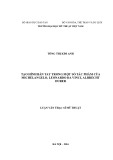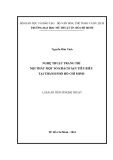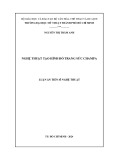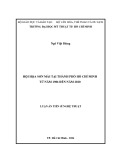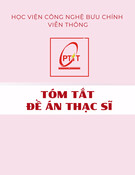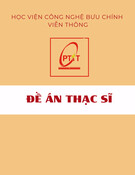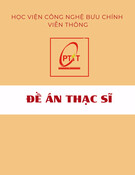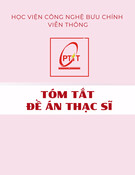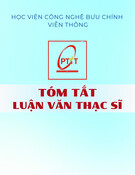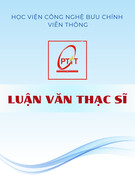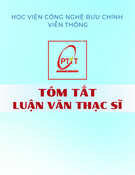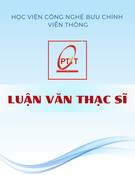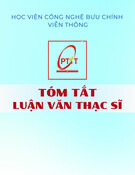
Annals of Mathematics
Elliptic units for real
quadratic fields
By Henri Darmon and Samit Dasgupta

Annals of Mathematics,163 (2006), 301–346
Elliptic units for real quadratic fields
By Henri Darmon and Samit Dasgupta
Contents
1. A review of the classical setting
2. Elliptic units for real quadratic fields
2.1. p-adic measures
2.2. Double integrals
2.3. Splitting a two-cocycle
2.4. The main conjecture
2.5. Modular symbols and Dedekind sums
2.6. Measures and the Bruhat-Tits tree
2.7. Indefinite integrals
2.8. The action of complex conjugation and of Up
3. Special values of zeta functions
3.1. The zeta function
3.2. Values at negative integers
3.3. The p-adic valuation
3.4. The Brumer-Stark conjecture
3.5. Connection with the Gross-Stark conjecture
4. A Kronecker limit formula
4.1. Measures associated to Eisenstein series
4.2. Construction of the p-adic L-function
4.3. An explicit splitting of a two-cocycle
4.4. Generalized Dedekind sums
4.5. Measures on Zp×Zp
4.6. A partial modular symbol of measures on Zp×Zp
4.7. From Zp×Zpto X
4.8. The measures µand Γ-invariance
Introduction
Elliptic units, which are obtained by evaluating modular units at quadratic
imaginary arguments of the Poincar´e upper half-plane, provide us with a rich
source of arithmetic questions and insights. They allow the analytic construc-
tion of abelian extensions of imaginary quadratic fields, encode special values

302 HENRI DARMON AND SAMIT DASGUPTA
of zeta functions through the Kronecker limit formula, and are a prototype for
Stark’s conjectural construction of units in abelian extensions of number fields.
Elliptic units have also played a key role in the study of elliptic curves with
complex multiplication through the work of Coates and Wiles.
This article is motivated by the desire to transpose the theory of elliptic
units to the context of real quadratic fields. The classical construction of
elliptic units does not give units in abelian extensions of such fields.1Naively,
one could try to evaluate modular units at real quadratic irrationalities; but
these do not belong to the Poincar´e upper half-plane H. We are led to replace
Hby a p-adic analogue Hp:= P1(Cp)−P1(Qp), equipped with its structure of a
rigid analytic space. Unlike its archimedean counterpart, Hpdoes contain real
quadratic irrationalities, generating quadratic extensions in which the rational
prime pis either inert or ramified.
Fix such a real quadratic field K⊂Cp, and denote by Kpits completion
at the unique prime above p. Chapter 2 describes an analytic recipe which to
a modular unit αand to τ∈H
p∩Kassociates an element u(α, τ)∈K×
p, and
conjectures that this element is a p-unit in a specific narrow ring class field of
Kdepending on τand denoted Hτ. The construction of u(α, τ) is obtained
by replacing, in the definition of “Stark-Heegner points” given in [Dar1], the
weight-2 cusp form attached to a modular elliptic curve by the logarithmic
derivative of α, an Eisenstein series of weight 2. Conjecture 2.14 of Chapter 2,
which formulates a Shimura reciprocity law for the p-units u(α, τ), suggests
that these elements display the same behavior as classical elliptic units in many
key respects.
Assuming Conjecture 2.14, Chapter 3 relates the ideal factorization of the
p-unit u(α, τ) to the Brumer-Stickelberger element attached to Hτ/K. Thanks
to this relation, Conjecture 2.14 is shown to imply the prime-to-2 part of
the Brumer-Stark conjectures for the abelian extension Hτ/K—an implication
which lends some evidence for Conjecture 2.14 and leads to the conclusion that
the p-units u(α, τ) are (essentially) the p-adic Gross-Stark units which enter
in Gross’s p-adic variant [Gr1] of the Stark conjectures, in the context of ring
class fields of real quadratic fields.
Motivated by Gross’s conjecture, Chapter 4 evaluates the p-adic logarithm
of the norm from Kpto Qpof u(α, τ) and relates this quantity to the first deriva-
tive of a partial p-adic zeta function attached to Kat s= 0. The resulting
formula, stated in Theorem 4.1, can be viewed as an analogue of the Kronecker
limit formula for real quadratic fields. In contrast with the analogue given in
Ch. II, §3 of [Sie1] (see also [Za]), Theorem 4.1 involves non-archimedean in-
1Except when the extension in question is contained in a ring class field of an auxiliary
imaginary quadratic field, an exception which is the basis for Kronecker’s solution to Pell’s
equation in terms of values of the Dedekind η-function.

ELLIPTIC UNITS FOR REAL QUADRATIC FIELDS 303
tegration and p-adic rather than complex zeta-values. Yet in some ways it
is closer to the spirit of the original Kronecker limit formula because it in-
volves the logarithm of an expression which belongs, at least conjecturally, to
an abelian extension of K. Theorem 4.1 makes it possible to deduce Gross’s
p-adic analogue of the Stark conjectures for Hτ/K from Conjecture 2.14.
It should be stressed that Conjecture 2.14 leads to a genuine strengthening
of the Gross-Stark conjectures of [Gr1] in the setting of ring class fields of real
quadratic fields, and also of the refinement of these conjectures proposed in
[Gr2]. Indeed, the latter exploits the special values at s= 0 of abelian L-
series attached to K, as well as derivatives of the corresponding p-adic zeta
functions, to recover the images of Gross-Stark units in K×
p/¯
O×
K, where ¯
O×
K
is the topological closure in K×
pof the unit group of K. Conjecture 2.14 of
Chapter 2 proposes an explicit formula for the Gross-Stark units themselves.
It would be interesting to see whether other instances of the Stark conjectures
(both classical, and p-adic) are susceptible to similar refinements.2
1. A review of the classical setting
Let Hbe the Poincar´e upper half-plane, and let Γ0(N) denote the standard
Hecke congruence group acting on Hby M¨obius transformations. Write Y0(N)
and X0(N) for the modular curves over Qwhose complex points are identified
with H/Γ0(N) and H∗/Γ0(N) respectively, where H∗:= H∪P1(Q)isthe
extended upper half-plane.
Amodular unit is a holomorphic nowhere-vanishing function on H/Γ0(N)
which extends to a meromorphic function on the compact Riemann surface
X0(N)(C). A typical example of such a unit is the modular function
∆(τ)/∆(Nτ).More generally, let DNbe the free Z-module generated by the
formal Z-linear combinations of the positive divisors of N, and let D0
Nbe the
submodule of linear combinations of degree 0. We associate to each element
δ=nd[d]∈D0
Nthe modular unit
∆δ(τ)=
d|N
∆(dτ)nd.(1)
Fix such a modular unit α=∆
δon Γ0(N). Its level Nwill remain fixed from
now on.
Let M0(N)⊂M2(Z) denote the ring of integral 2 ×2 matrices which
are upper-triangular modulo N. Given τ∈H, its associated order in M0(N),
denoted Oτ, is the set of matrices in M0(N) which fix τunder M¨obius trans-
2In a purely archimedean context, recent work of Ren and Sczech on the Stark conjectures
for a complex cubic field suggests that the answer to this question should be “yes”.

304 HENRI DARMON AND SAMIT DASGUPTA
formations:
Oτ:= ab
cd
∈M0(N) such that aτ +b=cτ2+dτ.(2)
This set of matrices is identified with a discrete subring of Cby sending the
matrix ab
cd
to the complex number cτ +d. Hence Oτis identified either
with Zor with an order in an imaginary quadratic field K.
Let Obe such an order of discriminant −D, relatively prime to N. Define
HO:= {τ∈Hsuch that Oτ≃O}.
This set is preserved under the action of Γ0(N)byM¨obius transformations,
and the quotient HO
/Γ0(N) is finite.
If τ=u+iv belongs to HO
, then the binary quadratic form
˜
Qτ(x, y)=v−1(x−yτ)(x−y¯τ)
of discriminant −4 is proportional to a unique primitive integral quadratic
form denoted
Qτ(x, y)=Ax2+Bxy +Cy2,with A>0.(3)
Since Dis relatively prime to N, we have N|Aand B2−4AC =−D.We
introduce the invariant
u(α, τ):=α(τ).(4)
The theory of complex multiplication (cf. [KL, Ch. 9, Lemma 1.1 and Ch. 11,
Th. 1.2]) implies that u(α, τ) belongs to an abelian extension of the imaginary
quadratic field K=Q(τ). More precisely, class field theory identifies Pic(O)
with the Galois group of an abelian extension Hof K, the so-called ring class
field attached to O. Let OHdenote the ring of integers of H.Ifτbelongs to
HO
, then
u(α, τ) belongs to OH[1/N ]×,(5)
and
(σ−1)u(α, τ) belongs to O×
H,for all σ∈Gal(H/K).(6)
Let
rec : Pic(O)−→Gal(H/K)(7)
denote the reciprocity law map of global class field theory, which for all prime
ideals p∤Dof K, sends the class of p∩Oto the inverse of the Frobenius
element at pin Gal(H/K). One disposes of an explicit description of the action
of Gal(H/K)ontheu(α, τ) in terms of (7). To formulate this description,



